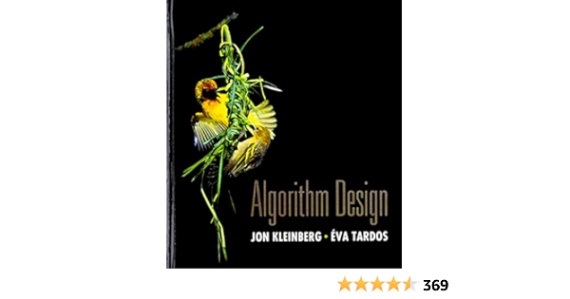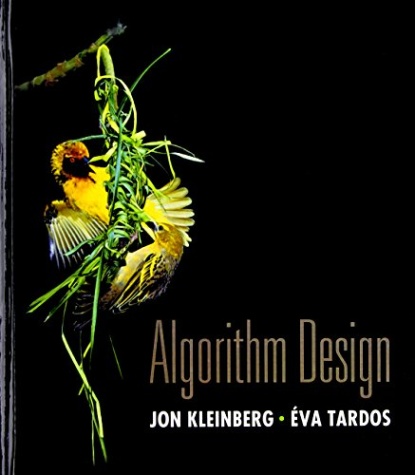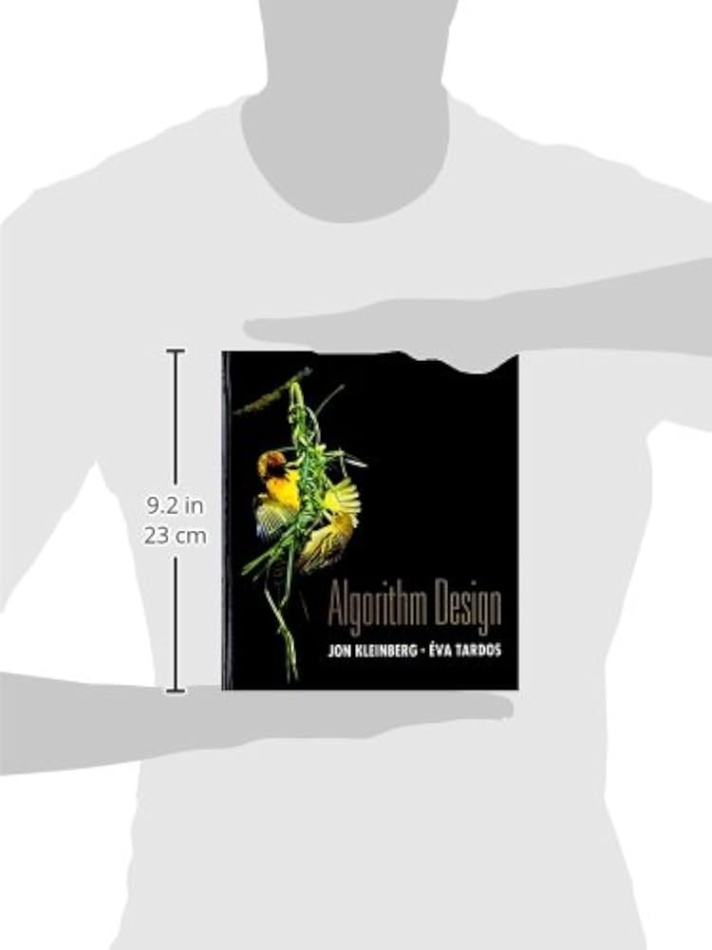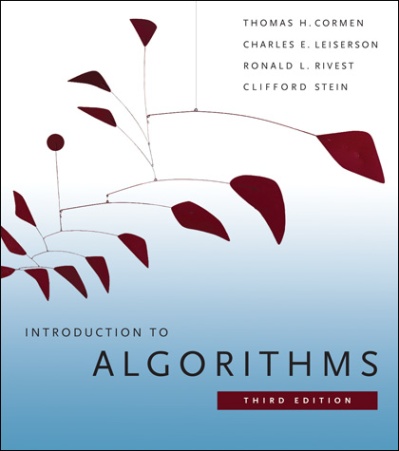Mastering Algorithms: A Guide to Kleinberg and Tardos
Algorithmen sind die Grundlage der Informatik und bilden das Rückgrat vieler technologischer Fortschritte. Um ein Profi auf diesem Gebiet zu werden, ist es unerlässlich, die Kunst des Designs nach Kleinberg und Tardos zu beherrschen. Ihre bahnbrechende Arbeit hat die Art und Weise, wie wir Algorithmen verstehen und anwenden, revolutioniert.

Image Source: media-amazon.com
Das Geheimnis hinter dem Erfolg von Kleinberg und Tardos liegt in ihrer Fähigkeit, komplexe Probleme in kleinere, leichter zu lösende Teile zu zerlegen. Indem sie den Prozess der Algorithmusgestaltung in überschaubare Schritte unterteilen, machen sie es auch Anfängern leicht, die Grundlagen zu erlernen und sich auf dem Weg zum Algorithmusprofi zu bewegen.
Ein wichtiger Teil des Designs nach Kleinberg und Tardos ist die Fähigkeit, effiziente Algorithmen zu entwickeln, die eine optimale Lösung für ein gegebenes Problem bieten. Dies erfordert ein tiefes Verständnis der zugrunde liegenden Theorie sowie kreative Denkweise, um innovative Lösungsansätze zu entwickeln.

Image Source: abebooks.com
Ein weiterer Schlüsselaspekt des Designs nach Kleinberg und Tardos ist die Fähigkeit, Algorithmen zu analysieren und ihre Laufzeitkomplexität zu bewerten. Durch die Anwendung mathematischer Konzepte wie Laufzeitanalyse und Big-O-Notation können wir die Leistungsfähigkeit eines Algorithmus quantifizieren und optimieren.
Um ein Profi im Algorithmusdesign zu werden, ist es wichtig, sich mit den verschiedenen Arten von Algorithmen vertraut zu machen. Dazu gehören Sortieralgorithmen, Suchalgorithmen, Graphenalgorithmen und viele mehr. Jeder Algorithmustyp hat seine eigenen Besonderheiten und Anwendungen, die es zu verstehen gilt.

Image Source: media-amazon.com
Das Studium von Kleinberg und Tardos bietet eine umfassende Einführung in die Welt der Algorithmen und vermittelt die notwendigen Fähigkeiten, um komplexe Probleme effektiv zu lösen. Indem wir ihre Methoden und Techniken anwenden, können wir unseren Horizont erweitern und neue Möglichkeiten für die Anwendung von Algorithmen entdecken.
Die Kunst des Designs nach Kleinberg und Tardos erfordert Geduld, Ausdauer und eine Leidenschaft für die Informatik. Es ist eine Reise, die ständige Lernbereitschaft und die Bereitschaft zur Herausforderung erfordert. Doch die Belohnungen sind großartig – die Fähigkeit, innovative Lösungen für komplexe Probleme zu entwickeln und die Welt der Algorithmen zu beherrschen.

Image Source: amazonaws.com
In einer Welt, die zunehmend von Technologie und Daten geprägt ist, wird die Beherrschung der Kunst des Designs nach Kleinberg und Tardos zu einem wertvollen Gut. Durch die Anwendung ihrer Methoden können wir effizientere Algorithmen entwickeln, die dazu beitragen, die Welt um uns herum zu verbessern und zu transformieren.
Also, tauchen Sie ein in die Welt der Algorithmen und entdecken Sie die Kunst des Designs nach Kleinberg und Tardos. Werden Sie zum Meister der Algorithmen und lassen Sie Ihre Kreativität und Ihr Wissen die Grenzen des Möglichen überschreiten. Denn in der Welt der Algorithmen ist alles möglich, wenn Sie bereit sind, die Herausforderung anzunehmen.
Dive Into the Art of Algorithm Design

Image Source: princeton.edu
In the world of computer science, algorithms are the backbone of everything we do. From simple tasks like sorting a list of numbers to complex operations like machine learning algorithms, understanding how to design efficient and effective algorithms is crucial for success in the field. In their book Algorithm Design Kleinberg and Tardos have outlined key principles and strategies that can help you become a pro at designing algorithms. Let’s dive into the art of algorithm design and explore how you can master this essential skill.
One of the first things to consider when designing an algorithm is the problem at hand. What are you trying to achieve? What are the constraints and requirements of the problem? Understanding the problem thoroughly is crucial for coming up with a solution that is both correct and efficient. Kleinberg and Tardos emphasize the importance of breaking down the problem into smaller subproblems, a technique known as divide and conquer. By breaking the problem into smaller parts, you can tackle each part individually before combining them to solve the larger problem.
Another key aspect of algorithm design is analyzing the runtime and space complexity of your algorithm. How fast does your algorithm run? How much memory does it use? These are important questions to consider when designing algorithms, as efficiency is often a key factor in determining the success of a solution. Kleinberg and Tardos provide techniques for analyzing the complexity of algorithms, such as big O notation, which allows you to compare the efficiency of different algorithms and choose the best one for your problem.
In addition to understanding the problem and analyzing the runtime complexity, creativity is also a crucial element of algorithm design. Thinking outside the box and coming up with innovative solutions can set you apart as a true algorithm pro. Kleinberg and Tardos encourage readers to experiment with different approaches, try new ideas, and never be afraid to fail. Failure is often a stepping stone to success in algorithm design, as it allows you to learn from your mistakes and improve your skills.
Furthermore, collaboration and communication are essential skills for algorithm designers. Working with others to brainstorm ideas, discuss solutions, and provide feedback can help you see problems from different perspectives and come up with more robust solutions. Kleinberg and Tardos stress the importance of teamwork in algorithm design, as diverse viewpoints and expertise can lead to more creative and effective solutions.
Finally, practicing algorithm design is key to mastering this art. The more you practice designing algorithms, the better you will become at it. Kleinberg and Tardos provide a variety of exercises and problems in their book to help readers sharpen their algorithm design skills. By working through these exercises and challenging yourself to think critically and creatively, you can hone your abilities and become a true algorithm prodigy.
In conclusion, diving into the art of algorithm design is a rewarding and exciting journey. By following the principles and strategies outlined by Kleinberg and Tardos, you can become a pro at designing algorithms and tackle even the most complex problems with confidence. So, unleash your inner algorithm prodigy, learn the secrets to algorithm mastery, and start designing algorithms like a true professional.
Unleash Your Inner Algorithm Prodigy
Are you ready to tap into your inner algorithmic genius? In the world of computer science, mastering algorithms is essential for success. And with the guidance of experts like Kleinberg and Tardos, you can learn the art of designing algorithms like a pro.
Algorithms are the building blocks of computer programs, enabling them to perform tasks efficiently and effectively. From sorting data to finding the shortest path in a network, algorithms are crucial in solving complex problems in various fields. And by unleashing your inner algorithm prodigy, you can take your skills to the next level.
Kleinberg and Tardos are renowned experts in the field of algorithm design, known for their comprehensive and insightful approach to teaching. In their book, Mastering Algorithms, they provide a guide that covers the fundamentals of algorithmic design, analysis, and implementation. By studying their work, you can gain a deep understanding of algorithms and how to apply them in practice.
One of the key principles of algorithm design is efficiency. Algorithms should be designed to solve problems quickly and with minimal resources. Kleinberg and Tardos emphasize the importance of understanding the time and space complexity of algorithms, enabling you to make informed decisions about which algorithm to use in different scenarios.
But mastering algorithms is not just about efficiency – it’s also about creativity. As an algorithm prodigy, you have the opportunity to think outside the box and come up with innovative solutions to complex problems. By exploring different algorithmic techniques and approaches, you can push the boundaries of what is possible in algorithm design.
Another essential aspect of algorithm mastery is problem-solving. Algorithms are tools for solving problems, and as an algorithm prodigy, you must develop your problem-solving skills to tackle challenges head-on. Kleinberg and Tardos provide plenty of examples and exercises in their book to help you sharpen your problem-solving abilities and apply them to real-world problems.
In the world of algorithm design, collaboration is key. By working with other algorithm prodigies and experts in the field, you can exchange ideas, learn from each other, and push the boundaries of what is possible. Kleinberg and Tardos advocate for a collaborative approach to algorithm design, emphasizing the importance of teamwork in solving complex problems.
As you unleash your inner algorithm prodigy and dive into the world of algorithm design, remember to stay curious and open-minded. Algorithms are constantly evolving, and there is always something new to learn. By embracing a growth mindset and staying proactive in your learning, you can continue to grow and improve as an algorithmic genius.
So, are you ready to unleash your inner algorithm prodigy? With the guidance of experts like Kleinberg and Tardos, you can master the art of algorithm design and become a true algorithmic genius. Start exploring the world of algorithms today and unlock your full potential in the field of computer science.
Learn the Secrets to Algorithm Mastery
Are you ready to dive into the world of algorithms like a true professional? In the realm of computer science, understanding algorithms is essential for solving complex problems efficiently. With the guidance of Kleinberg and Tardos, you can unlock the secrets to algorithm mastery and become a true algorithm pro.
Algorithms are the building blocks of computer programs, providing step-by-step instructions for solving a specific problem. By understanding the principles of algorithm design, you can optimize your code and improve the efficiency of your programs. Kleinberg and Tardos have provided invaluable insights into the art of algorithm design, offering a comprehensive guide for mastering this essential skill.
One key concept in algorithm design is the idea of efficiency. By analyzing the time and space complexity of an algorithm, you can determine how well it will perform in practice. Kleinberg and Tardos emphasize the importance of designing algorithms that are both correct and efficient, ensuring that your programs can tackle even the most challenging problems with ease.
Another crucial aspect of algorithm design is the ability to think creatively and strategically. By approaching problems from different angles and considering various solutions, you can develop innovative algorithms that outperform traditional methods. Kleinberg and Tardos encourage algorithm designers to think outside the box and explore new approaches to problem-solving, pushing the boundaries of what is possible in the world of computer science.
One of the key principles of algorithm design is the concept of divide and conquer. By breaking down a problem into smaller subproblems and solving them individually, you can simplify complex tasks and improve the efficiency of your algorithms. Kleinberg and Tardos highlight the importance of this strategy in designing efficient algorithms, showing how it can be applied to a wide range of problem-solving scenarios.
In addition to efficiency and creativity, algorithm design also requires a strong foundation in mathematics and logic. Kleinberg and Tardos emphasize the importance of understanding the theoretical underpinnings of algorithms, including topics such as graph theory, dynamic programming, and probabilistic analysis. By mastering these fundamental concepts, you can develop a deeper understanding of algorithm design and tackle even the most challenging problems with confidence.
One of the key insights from Kleinberg and Tardos is the idea of algorithmic thinking. By approaching problems with a systematic and algorithmic mindset, you can develop elegant solutions that are both efficient and effective. Kleinberg and Tardos provide valuable tips and techniques for cultivating this mindset, helping you become a true algorithm pro and master the art of algorithm design.
Overall, mastering algorithms is a journey that requires dedication, creativity, and strategic thinking. With the guidance of Kleinberg and Tardos, you can unlock the secrets to algorithm mastery and become a true algorithm pro. By applying their insights and techniques to your own work, you can optimize your code, solve complex problems efficiently, and push the boundaries of what is possible in the world of computer science. So, are you ready to embark on this exciting journey and become a true algorithm master?
algorithm design kleinberg and tardos






